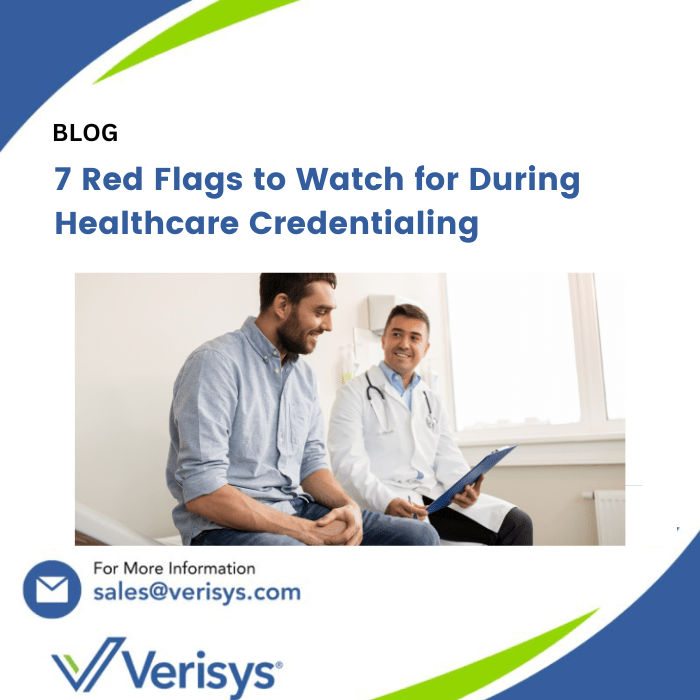– The best resource for monthly healthcare regulatory compliance updates. Compliance Updates: April 2024 Overlook: Licensure Compacts Other Legislation Board Updates Interstate Medical...


Provider credentialing is a crucial aspect of any healthcare organization. It helps healthcare organizations maintain the standard of providing quality patient care and ensures patient safety.
It takes time to thoroughly credential one provider, from several weeks to a few months. As you can probably guess, provider credentialing is tedious and time-consuming. However, the costs of failing to credential a provider properly are high.
During the credentialing process, you may encounter red flags that should be addressed. These flags may signal potential issues with the applicant’s qualifications or background. Below, we will look at seven red flags and discuss ways to prevent negligent credentialing.
Any red flags appearing during the credentialing process must be investigated. Failure to address these concerns can lead to severe consequences for your organization, such as compromised patient safety and reputational damage.
Here are seven red flags to look out for and the reasons why:
Negligent credentialing is when a claim of harm or suffering is brought against a provider. Going a step further – negligent credentialing lawsuits occur when an incompetent, unqualified, or excluded healthcare provider injures a patient. In these situations, not only does the healthcare provider face a malpractice lawsuit, but the hiring organization may also face serious financial and administrative consequences.
Costly negligent credentialing lawsuits can threaten an organization’s ability to participate in federally funded programs such as Medicare and Medicaid. With growing numbers of negligent credentialing lawsuits, it’s increasingly important for healthcare institutions to verify providers in the early stages of onboarding and to continue monitoring providers on an ongoing basis.
To prevent negligent credentialing lawsuits, be sure to:
Implement thorough pre-employment screenings with top industry-trusted tools
An effective and comprehensive credentialing process helps ensure that only qualified and trustworthy providers join your medical staff, thus promoting optimal care for patients and a secure healthcare environment. There are a couple of ways to achieve this.
One step is to ask interested providers to submit a pre-application, allowing you to make sure they meet the minimum requirements and address application concerns upfront. Another step is to thoroughly perform credentialing and primary source verification.
Some healthcare organizations hire a credentials verification organization (CVO) to help streamline their credentialing processes and perform primary source verification. Hiring a CVO like Verisys can minimize risk to your organization while maximizing patient safety and care.
However, hiring a CVO doesn’t absolve the organization from overseeing or participating in its credentialing processes. The organization is still responsible for ensuring primary source verification is completed on their population on a regular basis and for making an informed hiring decision based on provided documentation.
Verisys’ credentialing solutions are powered by FACIS, the healthcare industry’s gold standard in provider data. We maintain an exceptional quality standard in primary source verification, actionable insights, reporting, and timeliness in delivery, as evidenced by our NCQA certification and URAC accreditation.
Take the first step to minimizing organizational risk and ensuring the highest level of patient care – schedule an appointment with Verisys today. We can find the right credentialing solution for your healthcare organization.